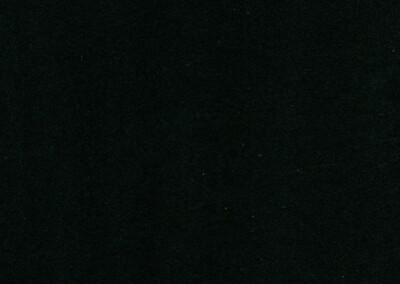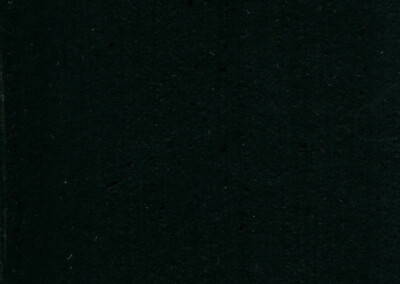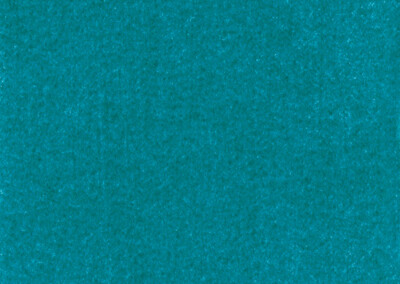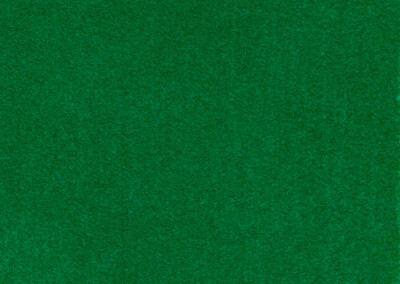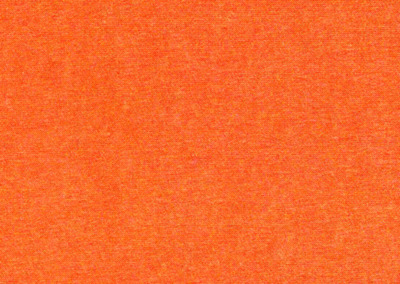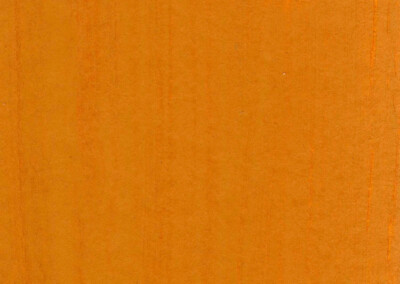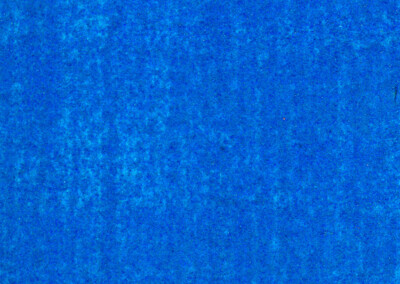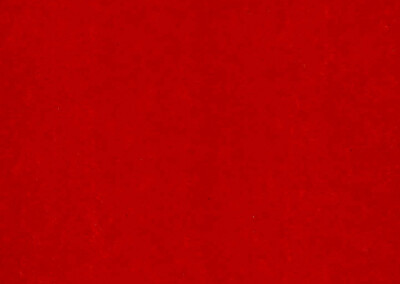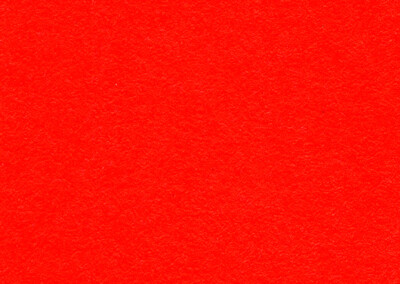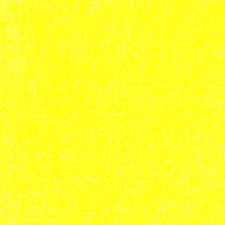Cima, The Incredulity of Saint Thomas
ca 1502-04Cima, The Incredulity of Saint Thomas
ca 1502-04Paintings sorted by Historical period | Painter | Subject matter | Pigments used
Overview
Medium: Oil
Support: originally: poplar wood, today: synthetic panel
Size: 71 cm x 92 cm
Art period: Renaissance
Bible Text
19 Then the same day at evening, being the first day of the week, when the doors were shut where the disciples were assembled for fear of the Jews, came Jesus and stood in the midst, and saith unto them, Peace be unto you.
20 And when he had so said, he shewed unto them his hands and his side. Then were the disciples glad, when they saw the Lord.
21 Then said Jesus to them again, Peace be unto you: as my Father hath sent me, even so send I you.
22 And when he had said this, he breathed on them, and saith unto them, Receive ye the Holy Ghost:
23 Whose soever sins ye remit, they are remitted unto them; and whose soever sins ye retain, they are retained.
24 But Thomas, one of the twelve, called Didymus, was not with them when Jesus came.
25 The other disciples therefore said unto him, We have seen the Lord. But he said unto them, Except I shall see in his hands the print of the nails, and put my finger into the print of the nails, and thrust my hand into his side, I will not believe.
26 And after eight days again his disciples were within, and Thomas with them: then came Jesus, the doors being shut, and stood in the midst, and said, Peace be unto you.
27 Then saith He to Thomas, Reach hither thy finger, and behold my hands; and reach hither thy hand, and thrust it into my side: and be not faithless, but believing.
28 And Thomas answered and said unto him, My Lord and my God.
29 Jesus saith unto him, Thomas, because thou hast seen Me, thou hast believed: blessed are they that have not seen, and yet have believed.
30 And many other signs truly did Jesus in the presence of His disciples, which are not written in this book:
31 But these are written, that ye might believe that Jesus is the Christ, the Son of God; and that believing ye might have life through His name.
Related Paintings
Rembrandt van Rijn, Incredulity of Saint Thomas, 1634
Oil on oak panel
Pushkin Museum, Moscow
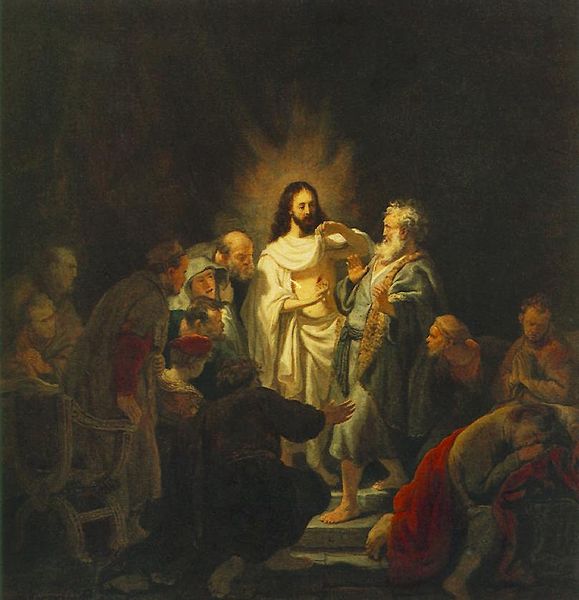
Caravaggio, Incredulity of Saint Thomas, 1602
Oil on canvas
Sanssouci, Potsdam
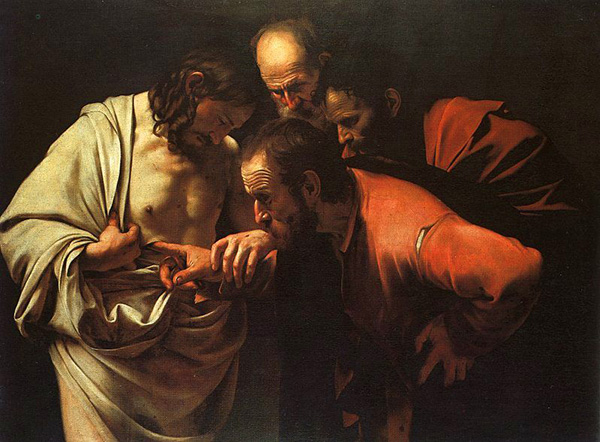
Pigments
Pigment Analysis
This pigment analysis is based on the work of Dunkerton and Roy, National Gallery London (1).
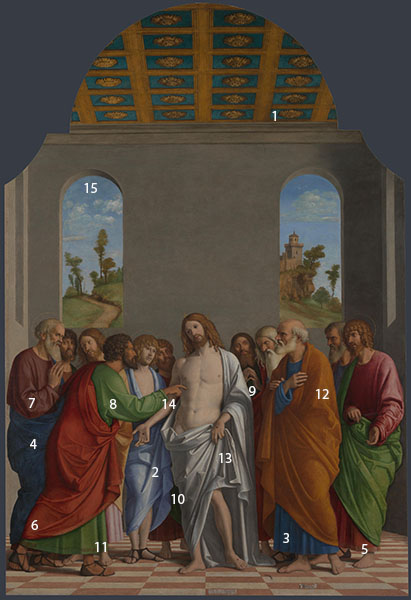
1 Blue-green area between rafters and rosettes in the ceiling: lead white and azurite of relatively low quality.
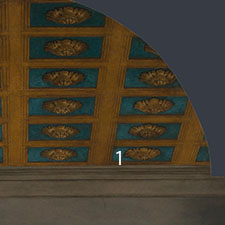
2 Mauvish pale blue mantle of the apostle to the left of Christ: lead white, azurite, and a small amount of red lake in the underpaint. The surface layer contains lead white, natural ultramarine, and red lake.
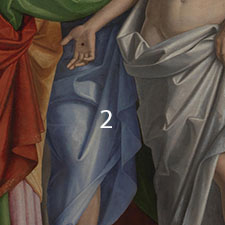
3 Blue robe of St Peter: azurite and lead white in the underpaint overglazed by a mixture of natural ultramarine and lead white.
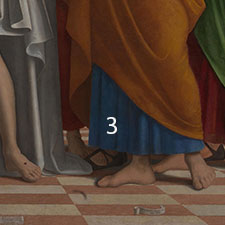
4 Dark blue mantle of the apostle on the far left: Underpaint of lead white and azurite overglazed with natural ultramarine.
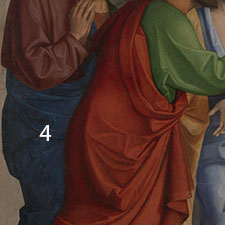
5 Red skirt of the last apostle to the right: lead white mixed with red lake, vermilion overpainted with a red lake glaze.
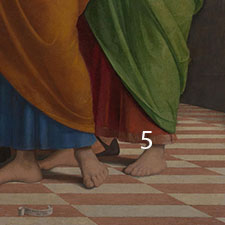
6 Red robe of St Thomas: lower layer contains a mixture of vermilion, red lake, and a little white. Above it, there is a layer of a pure red lake which is overglazed with red lake glaze.

7 Purple-red robe of the last apostle on the left: underlayer consists of red ochre and lead white. The top layer is a glaze of red lake.
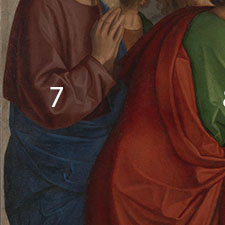
8 The green drapery of St Thomas is painted in several layers: a) lead white underlayer, b) modeling layer consisting of verdigris, malachite and lead white, c) copper resinate semi-glaze, d) series of copper resinate glazes with the red lake as a final layer, e) opaque layer consisting of malachite and/or verdigris combined with lead-tin-yellow and lead white, e) final copper resinate glaze.
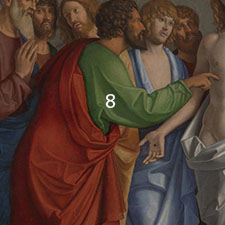
9 Small area of dark green drapery of the apostle standing in the background to the right of Christ: three layers of green undermodeling containing lead white mixed with verdigris and/or malachite. On top of this layer is a glaze of copper resinate green which is finally overglazed with red glaze.
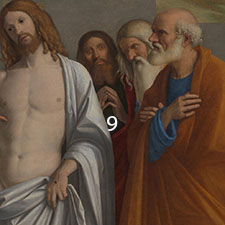
10 The small area of the dark green skirt of the apostle standing in the background to the left of Christ: red underlayer consisting of red ochre, lead white and a small amount of vermilion. Several layers of green undermodeling containing lead white mixed with verdigris and/or malachite. The top layer is a copper resinate glaze.
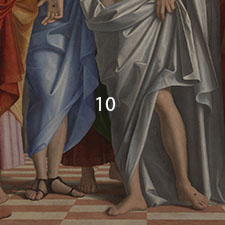
11 Yellow embroidered hem of St Thomas’s robe: a) opaque layer consisting of malachite, lead-tin-yellow and lead white, b) light yellow-green layer consisting of lead-tin-yellow and lead white with little green pigment, c) copper resinate glaze, d) dark yellow of the embroidery containing lead-tin-yellow, yellow ochre and possibly a yellow lake.

12 Orange mantle of St Peter: Underpaint layer consisting of lead white mixed with transparent yellow-brown pigment. The top layer consists of orpiment with a little realgar.
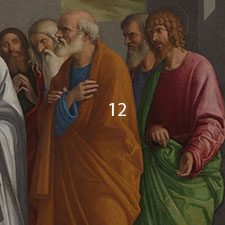
13 Grey drapery of Christ: The grey layer consists of vegetable black pigment (vine black) and lead white. The surface is painted in warmer bone black mixed with white.
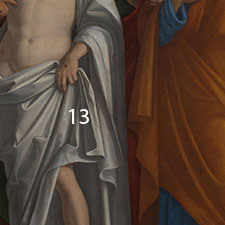
14 The flesh colour of Christ’s elbow: the underpaint consists of red ochre, vermilion, and lead white. The paint of the flesh colour contains lead white, vermilion, and a transparent orange-brown pigment. Small amounts of the red lake and malachite are also present.
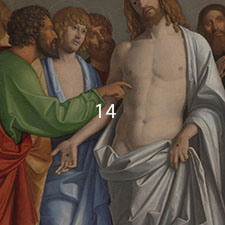
15 Blue sky: A mixture of azurite and natural ultramarine with a high amount of lead white.
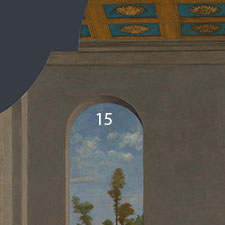
References
(1) Dunkerton, J., Roy, A. ‘The Technique and Restoration of Cima’s “The Incredulity of S. Thomas”‘. National Gallery Technical Bulletin Vol 10, pp 4–27.
Pigments Used in This Painting
Resources
Videos
Video: 'Cima da Conegliano & Giovanni Antonio Boltraffio: 104 Paintings (HD)' by 9 Tv
Publications and Websites
Publications
(1) Dunkerton, J., Roy, A. ‘The Technique and Restoration of Cima’s “The Incredulity of S. Thomas“‘. National Gallery Technical Bulletin Vol 10, pp 4–27.
(2) Wyld, M., Dunkerton, J. ‘The Transfer of Cima’s “The Incredulity of S. Thomas“‘. National Gallery Technical Bulletin Vol 9, pp 38–59.
(3) Royal Society of Chemistry, Chemistry and Art: The Incredulity of Saint Thomas, Teachers’ resources.


